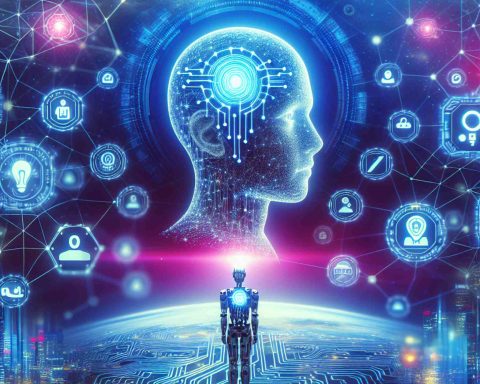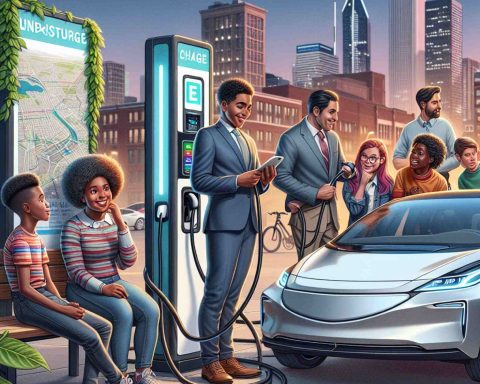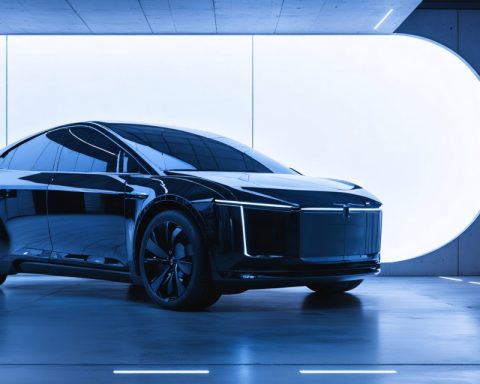- Apple’s $500 billion investment aims to drive a technological renaissance in the U.S. with a focus on artificial intelligence and cutting-edge production capabilities.
- The initiative includes an expansion of advanced manufacturing, creating thousands of jobs and fostering economic growth across states like Texas, Michigan, and Arizona.
- A new 250,000 square foot facility in Houston will play a pivotal role in crafting components for AI-driven cloud computing by 2026.
- Collaboration with industry leaders such as Broadcom and Texas Instruments strengthens the U.S. tech landscape and creates job opportunities.
- Arizona’s Fab 21 facility will focus on chip production, highlighting Apple’s commitment to precision engineering.
- A Michigan academy aims to nurture future innovators, supporting a pipeline of talent for America’s tech industry.
- Apple’s initiative exemplifies a transformative vision, reinforcing its commitment to ‘Made in America’ and leaving a lasting legacy.
A whirlwind of innovation is sweeping across the United States as Apple sets a bold course, investing a staggering $500 billion to create a technological renaissance. With a pivotal focus on artificial intelligence, Apple will scatter the seeds of future innovation by spending generously on research, infrastructure, and groundbreaking production capabilities.
The tech giant plans to invigorate American industry by dramatically increasing its advanced manufacturing fund. From Texas to Michigan, new facilities will emerge like behemoths, ushering in more than just cutting-edge tech but also thousands of jobs—each one a cog turning in the vast machinery of progress.
Envision a future where sleek servers are crafted in a brand-new Houston facility, standing tall at 250,000 square feet by 2026. This center of innovation will construct critical components that drive Apple’s own intelligence operations, echoing through its immense data centers to revolutionize private and AI-driven cloud computing.
A symbiotic relationship with industry leaders amplifies this movement, like the steady heartbeat of America’s thriving tech landscape. Apple collaborates closely with giants like Broadcom and Texas Instruments, delivering an economic spark as fresh job openings illuminate the path for an empowered workforce.
Embarking on a multi-billion-dollar silicon odyssey, Apple turns to Arizona’s Fab 21 facility to weave intricate chips—a testament to precision and expertise. Meanwhile, from the quiet shores of Michigan, a new academy emerges to sculpt the next generation, nurturing minds bright enough to propel the nation forward.
As Apple and its drama unfold, one thing is clear: They are not just architecting gadgets, but crafting a legacy. Positioning itself as a beacon of transformation, Apple reshapes the horizon, turning its vision into reality under the shimmering banner of ‘Made in America.’
Apple’s Bold $500 Billion Investment: The Future of Tech Innovation
How-To Steps & Life Hacks in AI Innovation
1. Learning and Upskilling in AI Technologies:
– Individuals interested in getting involved in AI can start by taking online courses from platforms like Coursera or edX. These courses range from beginner to advanced levels, covering areas like machine learning, neural networks, and AI ethics.
– Tip: Leverage resources like Apple’s Swift Playgrounds to start coding, even if you’re a beginner.
Real-World Use Cases
Apple’s innovation investment is expected to stimulate various sectors:
– Healthcare: AI can analyze patient data to provide personalized healthcare recommendations.
– Retail: Apple’s AI can help businesses optimize inventory and personalize customer experiences.
– Education: New technologies can provide interactive learning tools and personalized educational content.
Market Forecasts & Industry Trends
– AI Industry Growth: The AI market is projected to grow at a compounded annual growth rate (CAGR) of 42.2% from 2021 to 2027 (Source: Fortune Business Insights).
– Chipset Manufacturing Boom: With facilities like Arizona’s Fab 21, there’s a significant increase in domestic chip production, aligning with national security interests and reducing supply chain dependencies.
Features, Specs & Pricing Insights
– Advanced Manufacturing: Facilities like the Houston data centers are poised to lead in sustainable facility design, incorporating solar and other renewable energy sources to power servers efficiently.
– Pricing for Partnerships: Collaborations with companies such as Broadcom and Texas Instruments could lower costs for components, reflecting in the pricing of Apple’s products for end consumers.
Security & Sustainability
– Data Security Enhancements: With new AI-driven data centers, Apple will implement robust cybersecurity measures, ensuring secure storage and processing of data.
– Sustainability Initiatives: Apple’s commitment includes eco-friendly manufacturing processes and facilities, minimizing carbon footprints and promoting green energy.
Pros & Cons Overview
Pros:
– Economic Boost: Creation of thousands of jobs and stimulation of US manufacturing.
– Technological Leadership: Reaffirming America’s position in global tech leadership.
Cons:
– High Initial Costs: Significant upfront investment may affect short-term profitability.
– Regulatory Challenges: Potential hurdles in navigating US policies on manufacturing and tech.
Reviews & Comparisons
Apple stands out from competitors like Google and Amazon through its focus on integrating AI into hardware and software solutions, enhancing features without compromising user privacy—a key differentiator in customer choice.
Actionable Recommendations
– For Entrepreneurs: Consider partnerships with Apple for supply chain benefits and to leverage AI advancements in business operations.
– For Investors: Observe Apple’s moves as indicators for potential investment opportunities in AI and chip manufacturing stocks.
– For Job Seekers: Eye emerging job opportunities in tech and logistics around Apple’s new facilities.
For more information about Apple’s global commitment to innovation and sustainability, visit Apple’s website. This investment not only powers immediate tech advancements but also fosters a long-term legacy of growth and transformation in American technology.








